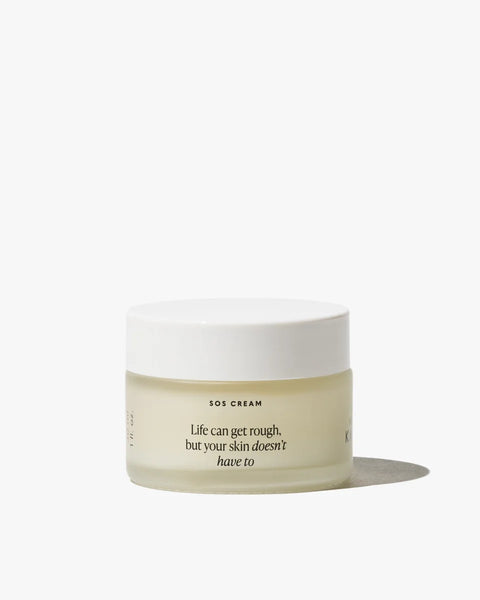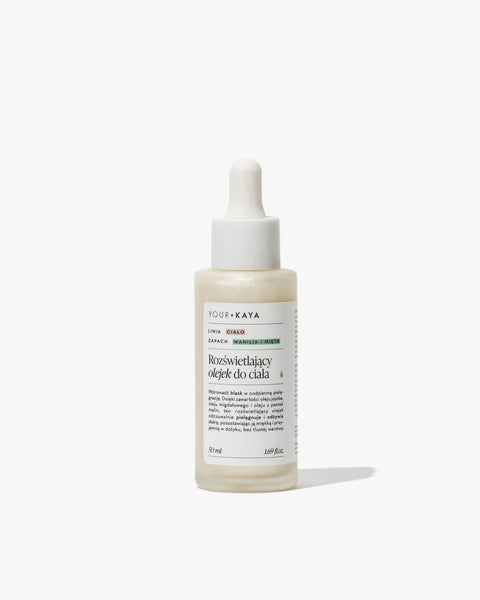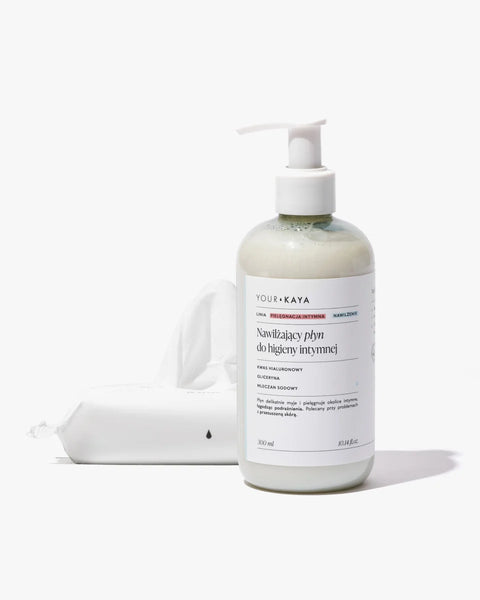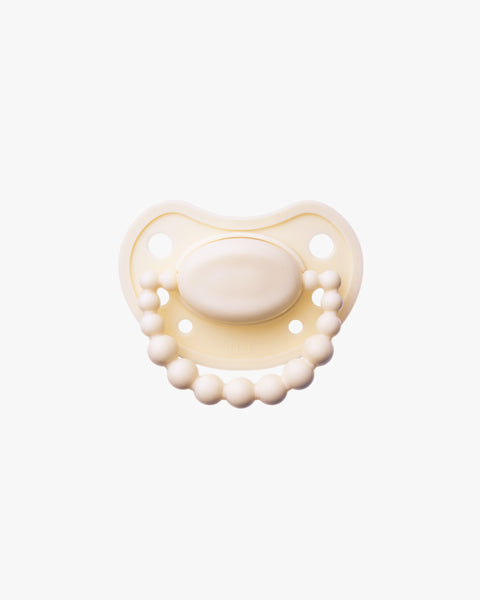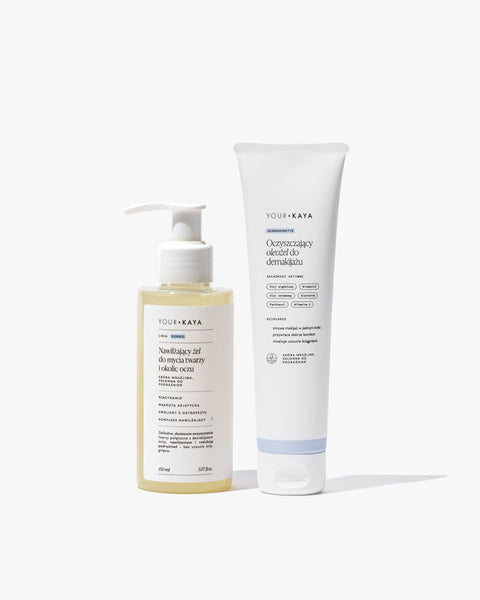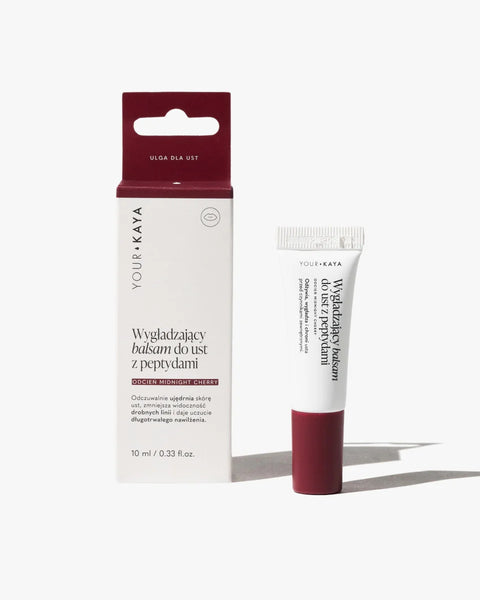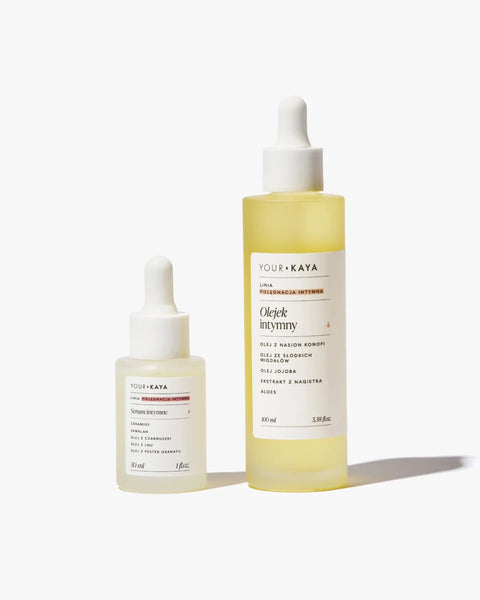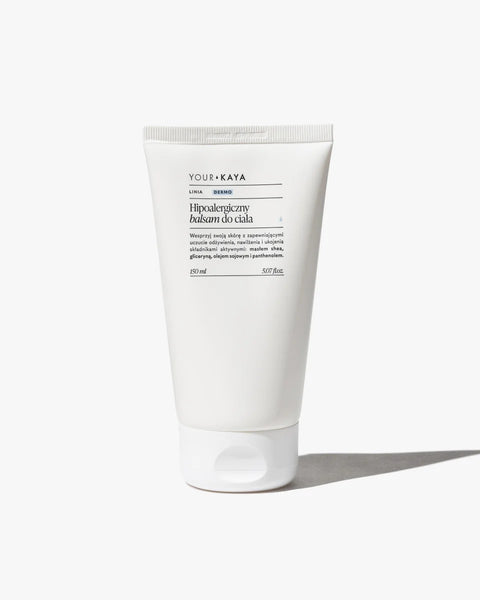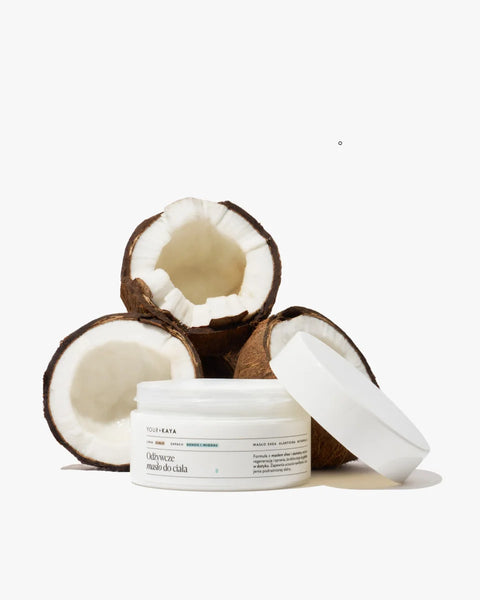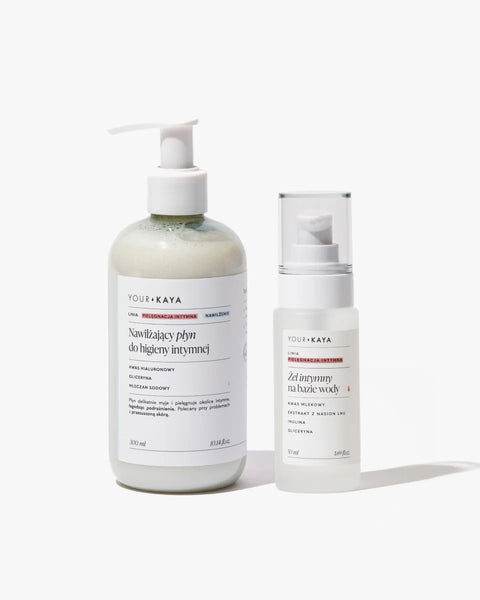Shaving Blemishes – What Are They?
Red razor bumps are nothing more than inflammation that occurs in hair follicles as a result of shaving or ingrown hairs. They are small, round lesions on the skin that often resemble a regular pimple.

They may not keep us awake at night ( although the itching and pain can make it much harder ), but they certainly get under the skin of anyone who uses a razor to achieve soft and smooth skin.
Small razor bumps can stay on the skin from a few hours to a few or a dozen days , depending on what exactly caused them to appear, how you reacted to them ( psst, trying to squeeze them never ends well! ), and how your body deals with the inflammation.
Also check out our article on shaving intimate areas .
What causes razor bumps?
One of the main causes of red bumps after shaving is inflammation in hair follicles. The hair follicle is the place where the hair grows. If we irritate it, we start a cascade of inflammatory processes, the result of which is an unsightly, itchy, and even painful change. When we shave the skin incorrectly (carelessly, dry), we can violate the epidermal barrier.
What does this mean?
A damaged epidermal barrier is an open door for microorganisms that will eagerly enter the deeper layers of the epidermis (and even the dermis in the case of deeper skin damage) and intensify local skin inflammation. It hurts just thinking about it, doesn't it? Especially when we're dealing with very sensitive skin in intimate areas or armpits. Yikes!
The second, very common cause of painful razor bumps is ingrown hairs . Inflammation occurs when a given hair – instead of emerging from the skin – continues to grow under the epidermis or when it decides to return under the skin. In such a case, our body treats it a bit like a foreign object that needs to be gotten rid of. As a result, it responds to the threat with a defensive reaction – inflammation.
How to get rid of razor bumps
How to get rid of or prevent razor bumps? As my grandmother or the experts at Mayo Clinic would say: just stop shaving .
Okay, but what about those who prefer to live against the grain ( or against the grain )? Let me share with you a few ways to reduce or even eliminate razor bumps —without ending your love affair with your razor.
Also check out our article " Strawberry legs – where do these bumps after shaving come from? "
Cleanse and moisten your skin thoroughly before shaving.
It may seem obvious , but proper skin preparation for shaving is essential . Remember to cleanse and moisturise your skin before each shave.
Don't try shaving on dry skin ( I made that mistake too often ) or irritated skin, and definitely not on skin that hasn't been cleansed beforehand ( shaving in a tent during a festival is a really bad idea! ). Dry, dirty and previously damaged skin are the perfect conditions for painful spots to appear.
And if you want to really get ready, give your skin a gentle exfoliation once or twice a week using a product with fine abrasive particles or a loofah sponge. Your skin will thank you – seriously, I know what I’m talking about!
You can read about how to properly exfoliate in our guide here .
Regular and gentle exfoliation of excess dead skin cells is one of the best ways to eliminate the problem of ingrown hairs and, consequently, reduce the occurrence of razor bumps.
Only use super sharp razors
It is not without reason that razor manufacturers always try to emphasize in their advertisements how sharp their blades are . A good blade means a more efficient and, above all, safer shave.
A worn-out razor can do you much more harm than good. A blade that has seen its best days is associated with a greater risk of painful cuts and irritation , and even the unpleasant consequences of infection.
Remember to never use the same razor as your partner - not only because you may upset the owner of the blade , but above all to avoid the negative consequences of sharing such intimate equipment . We know a lot of more pleasant ways to build closeness than treating infections together!
Use a softening, gentle shaving product
Softening the hairs just before shaving and using a product that provides the razor with adequate slip will help prevent irritation and red bumps.
And although something is better than nothing , try to use products that are designed for shaving - special creams or foams that contain soothing substances such as panthenol or allantoin. The milder the product, the better.
Don't stretch your skin while shaving
Nothing by force – these are the words I try to follow in life and… while shaving. Stretching the skin, pressing the razor hard against the body… it just won’t work.
Too much pressure can get to anyone – and sensitive skin for sure. To avoid irritation and pimples after shaving in (not only) intimate areas, try to limit unnatural stretching of the skin , which can cause you to not only get rid of hair, but also a large part of the upper layer of the epidermis.
Shave in the direction of hair growth
Another brilliantly simple way to get rid of razor bumps is to shave with the grain of your skin, never against it. It’s a small thing for you, but a big thing for your skin.
By shaving with the hair, we disturb the skin's protective layer to a lesser extent.
Psst, at this point I would also like to suggest that it is worth waiting until the hair is about 0.5 centimeters long before we pick up the razor again – this will not only reduce the appearance of ingrown hairs, but also irritation after shaving in general . Remember that the time for minimal hair regrowth is also the time for the skin to regenerate.
Rinse the blade after each stroke
Frequent washing prolongs (smooth) life . Washing the blade and keeping it fully “efficient” while shaving is crucial for the health of our skin. Why?
A razor clogged with hair and cream or gel is unable to shave all the hair, so we often drag it over the skin several times – and this is a direct path to irritation, ingrown hairs and unsightly pimples. So, you know, tell your sister to rinse the blade .
Take proper care of your skin after shaving
Here, proper hydration, regeneration and antiseptic action are important . Substances such as:
- Aloe extract – Aloe is definitely my favorite when it comes to aftercare . It soothes irritations, stimulates skin regeneration and has anti-inflammatory effects. Importantly, aloe can cause allergies in some people, so do an allergy test on a small area before applying to your skin.
- Hemp Seed Oil – This oil is a supercharger of nutrients. Thanks to its γ-linolenic acid (GLA) content, it acts as a powerful anti-inflammatory while stimulating skin regeneration .
- Sweet almond oil – this is my second favorite in my skin care routine, next to aloe. It protects against moisture loss, nourishes and softens the skin. I love using it for massage ( not only after shaving ).
- Jojoba oil – a liquid wax that is an ideal protector of skin in trouble, including skin irritated after shaving.
- Argan oil – rich in vitamin E, antioxidants and valuable fatty acids will soothe the skin, smooth it and accelerate regeneration .
How to prevent pimples from appearing after shaving?
My "home" way to prevent razor bumps is a 3-step routine that I repeat every time I plan to get rid of unwanted hair .
STEP 1. Exfoliation
Before I grab my razor, I reach for a gentle exfoliator and gently massage my skin wherever I plan to shave later. I like this step, so I'm in no rush.
STEP 2. Shaving
I apply shaving cream to cleansed and damp (!) skin . I reach for the razor and shave in the direction of hair growth.
STEP 3. Nutrition
After shaving, I gently pat my skin dry (by patting it with a towel – rubbing at this point is a total no-go) and begin the last, super-important step of skin care .
Skin is sensitive right after being treated by a razor, so I give it a lot of love in the form of an oil massage . If I feel the need, I repeat this step even twice a day – it's a very individual matter, so do what works best for you .
…and the pain is gone!
Okay, but what if, despite all your best efforts, you notice red bumps on your skin after shaving?
How to quickly get rid of shaving spots?
This probably won’t surprise you, but there’s no such thing as a magic cream that will quickly get rid of razor bumps . If the bumps appear in small amounts and disappear on their own after a few days, the best strategy is to leave them alone.
They will heal and disappear, and if you resist the urge to squeeze them out, they will most likely not leave any long-term marks behind ( unless you're prone to discoloration ).
However, if you have a large number of red bumps after shaving, they do not heal properly and leave discolorations, I recommend that you visit a dermatologist , who will not only assess the condition of your skin, but above all help you deal with the problem.
This may include recommending a different skin care routine, recommending medical or cosmetic products to help treat razor bumps faster, or (in some cases) recommending pharmacotherapy.
One, two, three, you don't have any spots!
My adventure with the razor is not and has not been without its flaws, but since I have been trying to keep an eye on these few things (which, let's face it, are not that bothersome), painful pimples appear very sporadically. There are days when they are not there at all , and once I couldn't count them.
Let me know what works for you!
- L. Chularojanamontri, P. Tuchinda, K. Kulthanan, K. Pongparit, Moisturizers for Acne , "The Journal of Clinical and Aesthetic Dermatology 2014, vol. 7, i. 5, p. 36-44, https://www.ncbi.nlm.nih.gov/pmc/articles/PMC4025519/ [accessed on 08/06/2022].
- NN Ferguson, Pseudofolliculitis barbae: Razor bumps , "University of Iowa Hospitals & Clinics", https://uihc.org/health-topics/pseudofolliculitis-barbae-razor-bumps [accessed 08/06/2022].
- D. Howard, When Razor Meets Skin: A Scientific Approach to Shaving , https://education.dermalogica.com.au/Content/docs/WhenRazorMeetsSkin.pdf [accessed on 08/06/2022].
- Ingrown hair , "Mayo Clinic", https://www.mayoclinic.org/diseases-conditions/ingrown-hair/symptoms-causes/syc-20373893 [accessed 08/06/2022].
- Jojoba Oil , "Encyclopedia.com", https://www.encyclopedia.com/places/africa/somalia-political-geography/jojoba-oil#3435100440 [accessed 08/06/2022].
- Pseudofolliculitis Barbae , "American Osteopathic College of Dermatology (AOCD)", https://www.aocd.org/page/PseudofolliculitisB [accessed on 08/06/2022].
- A. Surjushe, R. Vasani, DG Saple, Aloe vera: a short review , "Indian Journal of Dermatology" 2008, vol. 53, i. 4, p. 163-166, https://www.ncbi.nlm.nih.gov/pmc/articles/PMC2763764/ [accessed on 08/06/2022].
- MO Villareal, Sayuri Kume, T. Bourhim et al., Activation of MITF by Argan Oil Leads to the Inhibition of the Tyrosinase and Dopachrome Tautomerase Expressions in B16 Murine Melanoma Cells , "Evidence-Based Complementary and Alternative Medicine" 2013, vol. 2013, p.340107, https://www.ncbi.nlm.nih.gov/pmc/articles/PMC3723062/ [accessed on 08/06/2022].
- Zeeshan Ahmad, The uses and properties of almond oil , "Complementary Therapies in Clinical Practice" 2010, vol. 16, i. 1, p. 10-12, https://pubmed.ncbi.nlm.nih.gov/20129403/ [accessed on 08/06/2022].
Created at: 15/08/2022
Updated at: 15/08/2022



























